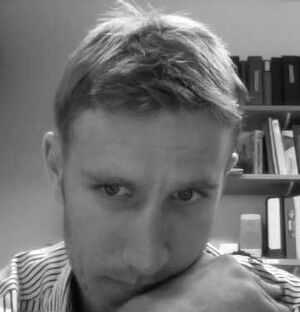User:David Weingeist
David Weingeist

Hi, my name is David Weingeist, and I'm currently at MIT. I use OpenWetWare as an integral part of my studies at MIT. I initially joined because I was the Teaching Assistant for 20.109 back in 2008. You can email me through OpenWetWare.
David Weingeist
I am now a fifth year graduate student in the Engelward Lab in the Department of Bioengineering at MIT. In collaboration with the Bhatia Lab (HST), we developed a high throughput assay to measure DNA damage. DNA damage has long been known to contribute to cancer, aging, neurological disorders, and heritable diseases. Although effective methods for assessing DNA damage levels have been available for decades, and it is well established that information about DNA damage levels is highly useful both in the clinic and in population studies, measurements of DNA damage are far from routine. The core experimental method for this work is the well-established single cell gel electrophoresis assay (comet assay), in which cells are embedded in agarose, exposed to buffers that dissolve the cell membrane and denature DNA, and subjected to electrophoresis. The governing principle is that damaged DNA migrates more readily than undamaged DNA, which tends to stay tightly wound within the nucleoid. A major goal of our research was to increase throughput by using patterning techniques to enable analysis of cells within a defined array. We optimized a microwell platform that has proved effective for studying multiple irradiation and chemical exposures on a single slide. We have further improved throughput with automated image analysis software and by scaling to a 96-well format. We have demonstrated an ability to quantify both single and double strand break burden and assess repair capacity in a high throughput manner. The CometChip has utility for epidemiological research by testing the repair capacity of human cell lines and we investigated its potential for drug screening by testing the efficacy of candidate small molecule inhibitors of base excision repair and non-homologous endjoining. Our current objectives include investigating the mechanistic detail of DNA repair pathways and optimizing protocols for primary samples in order to determine the genotoxic potential of various pollutants. Ultimately we aim to provide an assay that is simple enough to be useful in a broad range of clinical, epidemiological, and experimental studies.
Other Activities
When I'm not in the lab, I spend a good portion of my time training. I played tennis at Washington University in St. Louis and continue to play at MIT as a member of the Biological Engineering Intramural Team. Although I know tennis will always be a part of my life, I have turned my focus to martial arts. In 2006, I founded the MIT Kung Fu Club, which was converted into the MIT Qigong Club in 2008. For more information on this free club, visit our website: MIT Qigong
The Engelward Lab
I have been so fortunate to work with Dr. Bevin Engelward over the past years. She is not only an incredible scientist, but also an excellent teacher, mentor, and friend. To learn more about our lab please visit our website: The Engelward Lab